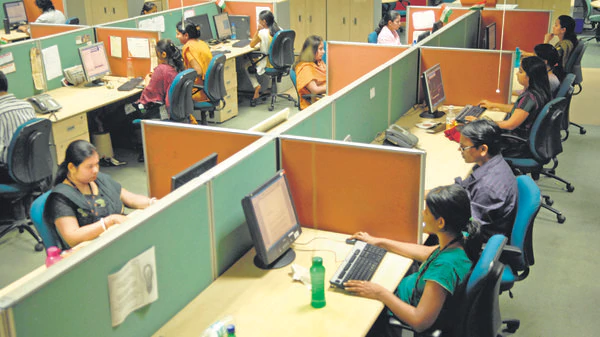Prediction is a mug’s game, but nonetheless, at the turn of every year, I feel compelled to try my hand at it. This year also marks a new decade and, therefore, seems more of a momentous juncture to make assertions about the future.
The news from the information technology (IT) services sector has been mixed over the past few quarters. One point that almost everyone agrees on is that the hardening stance on immigration of host countries throughout the world is proving costly for Indian IT. The era of “Indian firms operating internationally” is over, and the difficult change to “Indian-owned global companies” is underway.
Growth will be subdued as firms pivot to the new model. Unfortunately, so will margins. While the growth-versus-margins debate is as old as antiquity, the comparison is self-limiting, as it does not adequately capture the impact of pursuing a merger and acquisition (M&A)-driven approach to growth. It is probably better for analysts to start tracking growth vs return on invested capital (ROIC) on an ongoing basis. (ROIC is a performance ratio that aims to measure the percentage return that investors in a company are earning from their invested capital). Profit and loss statements give us earnings metrics, and do not capture investments fully. Many of these investments sit on the balance-sheet, especially for those firms that follow balance-sheet-heavy or M&A-intensive growth strategies. ROIC would be a better performance ratio for growth comparisons than earnings.
The implications for strategy and valuations depend on where a firm is on the ROIC curve. Trading off in favour of growth at the expense of ROIC makes sense as long as the absolute ROIC is superior. A recent JP Morgan analysis suggests that the operating ROIC for Tier-1 IT service firms has been all over the map. All firms, barring TCS, have had significant ROIC declines over 2013-14 to 2018-19, with Accenture, Infosys, HCL Technologies and Tech Mahindra showing absolute double-digit percentage declines.
That said, while experiencing a decline, Accenture has not allowed its ROIC numbers to fall to a level below that of TCS. Both firms are leaders on this metric, with their 2018-19 operating ROIC at ~45%. These firms at the top of the ladder have more latitude to keep investing in growth. Those at the bottom of the ladder are in a spot, wherein they have to consolidate and wring out additional operating efficiencies through a variety of techniques, including lay-offs. The ones in the middle need a more balanced strategy, where some, but not all, of the growth will need to come from acquisitions. Much of this growth is happening in the“digital” and “automation” realms.
The word “digital” is now overused, but that has not stopped most IT services firms from making bold claims about how much of their revenue derives from this segment. The problem is that the definition is fungible, and, even if only a very small portion of the work is, say, “mobile enablement”, which counts as digital, then almost all the back-end systems integration work (non-digital), which is also done to allow for the mobile enablement of a process, is conveniently grouped into the digital bucket.
Since digital is supposedly a good thing, digital capability should translate into overall revenue growth. If a firm has a really strong position in digital and continues to strengthen it, logic says that it would reflect in superior revenue growth versus peers. For a company to claim a much higher contribution of digital revenues (as a percentage of its total) than its peers’s but still experience consistently slower overall revenue growth than the others defies logic. Suffice it to say that a cursory analysis of these two numbers may reveal more than what offers comfort. Firms that refrain from bucketing their digital revenues in any special way are wise.
And then there is the question of automation. This consists of both workflow or rule-based automation and the increasing use of “intelligent” automation using artificial intelligence, machine learning, cognitive computing and so on. While Indian IT firms have been fairly adept at plucking low hanging fruit, they have thus far desisted from going in really deep into the cognitive automation areas. The fear of cannibalizing their existing revenue is why established IT services firms either delay the introduction of automation or desist from committing fully to it. This is also why some of the best automation software does not emerge from large listed IT services firms exposed to public market pressures that are petrified of cannibalizing their core. The leaders are either unlisted or small players such as Automation Anywhere, Blue Prism, ZoHo and others without significant legacy revenue streams to safeguard.
We saw this happen to the likes of EDS, HP and CSC with offshore services. By the time they reacted, this cannibalization had become a self-fulfilling prophecy, except instead of self-cannibalization, they were cannibalized by the competition.
Wiser men than me lead these companies. But sometimes the problem with wisdom is that it stops itself from going too far. For example, the reason why I think young hotshot surgeons are better at difficult operations is that they have something to prove, rather than older ones who have learnt to desist from danger. The wiser ones sometimes feel that absence of the body from a battle is better than presence of mind while in it—and delay decisive action.
Siddharth Pai is founder of Siana Capital, a venture fund management company focused on tech

















